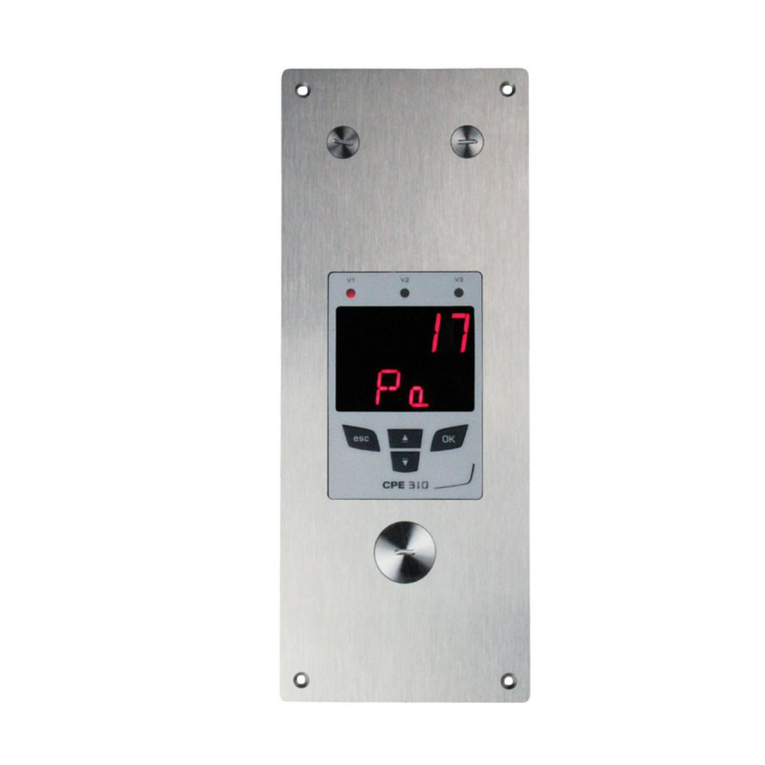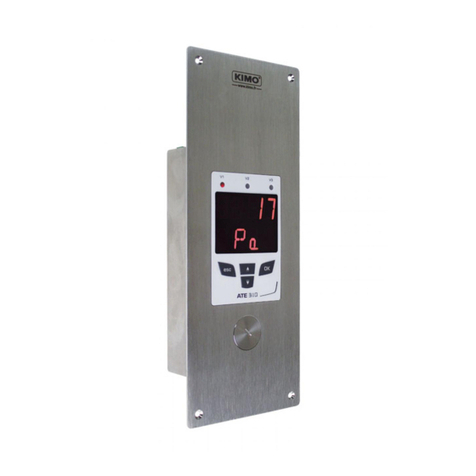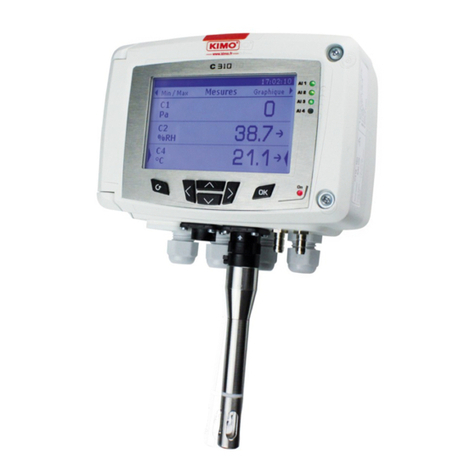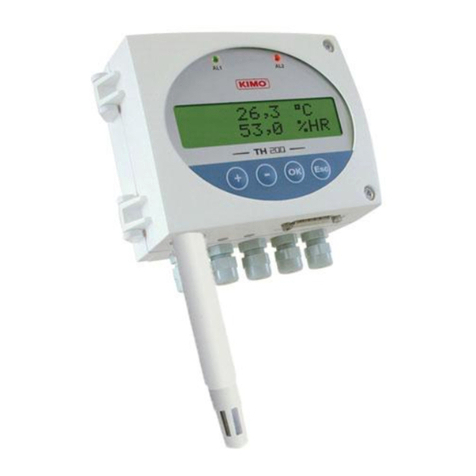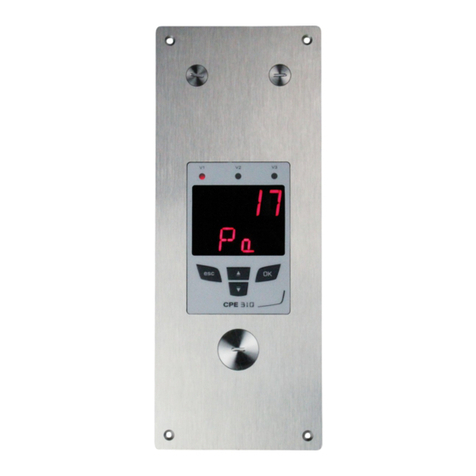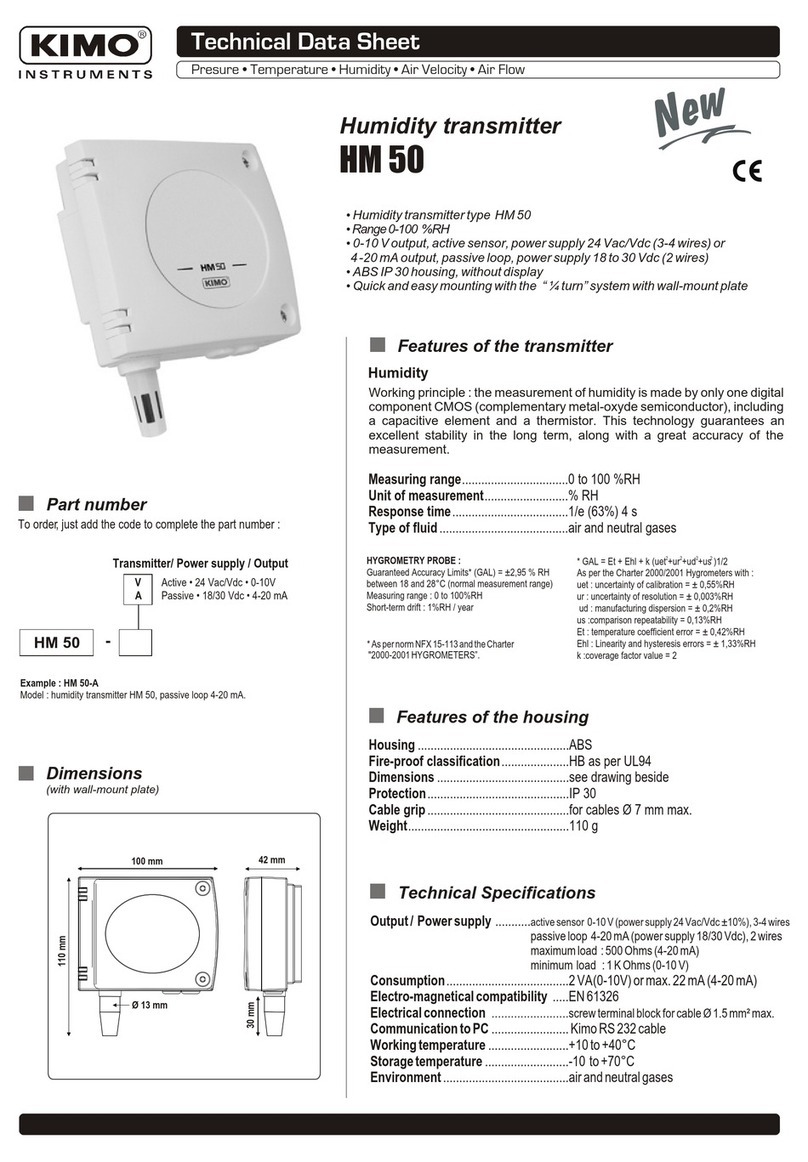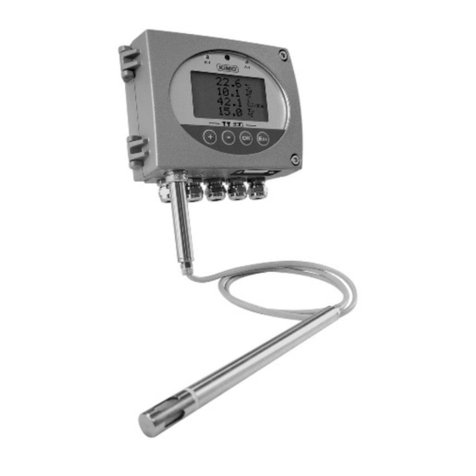
WITH or WITHOUT display
Features of the transmitter
Features of the housing
Temperature transmitter
TG 100
Part number
To order, just add the codes to complete the part number :
Example : TG100-VOA
Model : temperature transmitter TG 100 active sensor 0-10 V output, with
display and duct mount probe.
Transmitter / power supply / output
Display
OWith display
NWithout display
Mounting
ADuct mount
BTerminal block
TG100
-
Temperature
Measuring range ......................see chart ”Configuration”
Units of measurement .............°C, °F
Accuracy * ................................±0,5% of reading ±0,4°C (duct mount probe)
according to the probe (Pt 100 on terminal block)
Response time .........................1/e (63%) 5 sec. (duct mount probe)
according to the probe (Pt 100 on terminal block)
Resolution ................................0,1°C
Type of sensor..........................Pt 100 class A as per DIN IEC751
Type of fluid............................ air et neutral gases
• Duct temperature transmitter, TG100 type
• Measuring ranges from 0 to +50°C, -20 to +80°C, -50 to +50°C, 0 to +100°C,
0 to 200°C, 0 to +300°C, 0 to +400°C (according to model, see “Configuration”)
• 0-10 V output , active sensor, power supply 24 Vac/Vdc (3-4 wires) or
4-20 mA output , passive loop, power supply 18 to 30 Vdc (2 wires)
• ABS IP 65 housing, with or without display
• Quick and easy mounting “1/4 turn” system with wall-mount plate
Housing ...............................................ABS
Fire-proof classification.....................HB as per UL94
Dimensions ........................................see drawings beside
Protection............................................IP 65
Display.................................................5- digit LCD. Dimensions 50 x 15 mm
Height of the digits .............................10 mm
Cable grip ............................................for cables Ø 7mm maxi.
Weight..................................................145g (with display) - 110g (without display)
Technical Specifications
Output / power supply....active transmitter 0-10 V (power supply 24 Vac/Vdc ±10%), 3-4 wires
passive loop 4-20 mA(power supply. 18/30 Vdc), 2 wires
maximum load : 500 Ohms (4-20 mA)
minimum load : 1 K Ohms (0-10 V)
Consumption ....................................2 VA (0-10V) or max. 22 mA(4-20mA)
Electro-magnetical compatibility .......EN 61326
screw terminal block for cables Ø 1.5 mm² max
Communication to PC ...................... Kimo RS 232 cable
Working temperature (housing)..........0 to +50°C
Working temperature (probe) .............-20 to +80°C (duct mount probe)
according to the probe (Pt100 on terminal block)
Storage temperature ........................-10 to +70°C
Environment .....................................air and neutral gases
..........................................
..........................................
..........................................
Electrical connection .......................
VActive • 24 Vac/Vdc • 0-10V
A Passive • 18/30 Vdc • 4-20 mA
TG 100
duct mount
TG 100
Pt 100 on terminal block
(probe in option)
Dimensions of the housing
(with wall-mount plate)
Pt100 on terminal block
100 mm 42 mm
83 mm
Duct mount
100 mm 42 mm
83 mm
150 mm
Ø 13 mm
Working principle : Pt100 is a resistance with a positiv e
coefficient which varies according to the temperature. The higher the
temperature is, the more the value of the resistance increases.
Example : for 0°C 100 - for 100°C 138,5
e temperatur
*All the accuracies indicated in this technical datasheet were stated in laboratories conditions, and can be guaranted for
measurements carried out in the same conditions, or carried out with calibration compensation.
w
e
N
w
e
N
Technical Data Sheet
Pressure • Temperature • Humidity • Air Velocity • Airflow • Sound level






